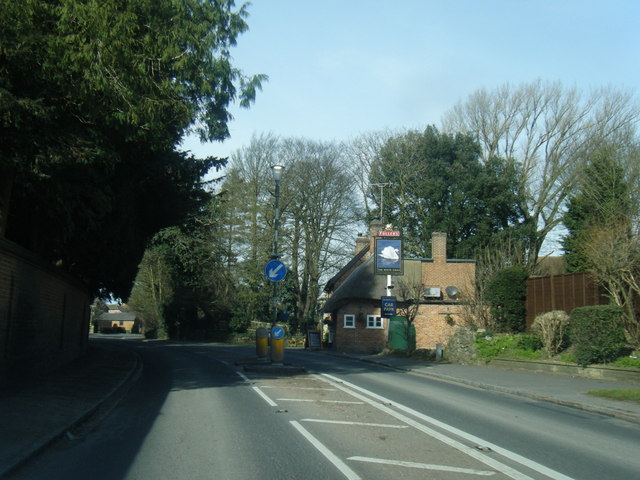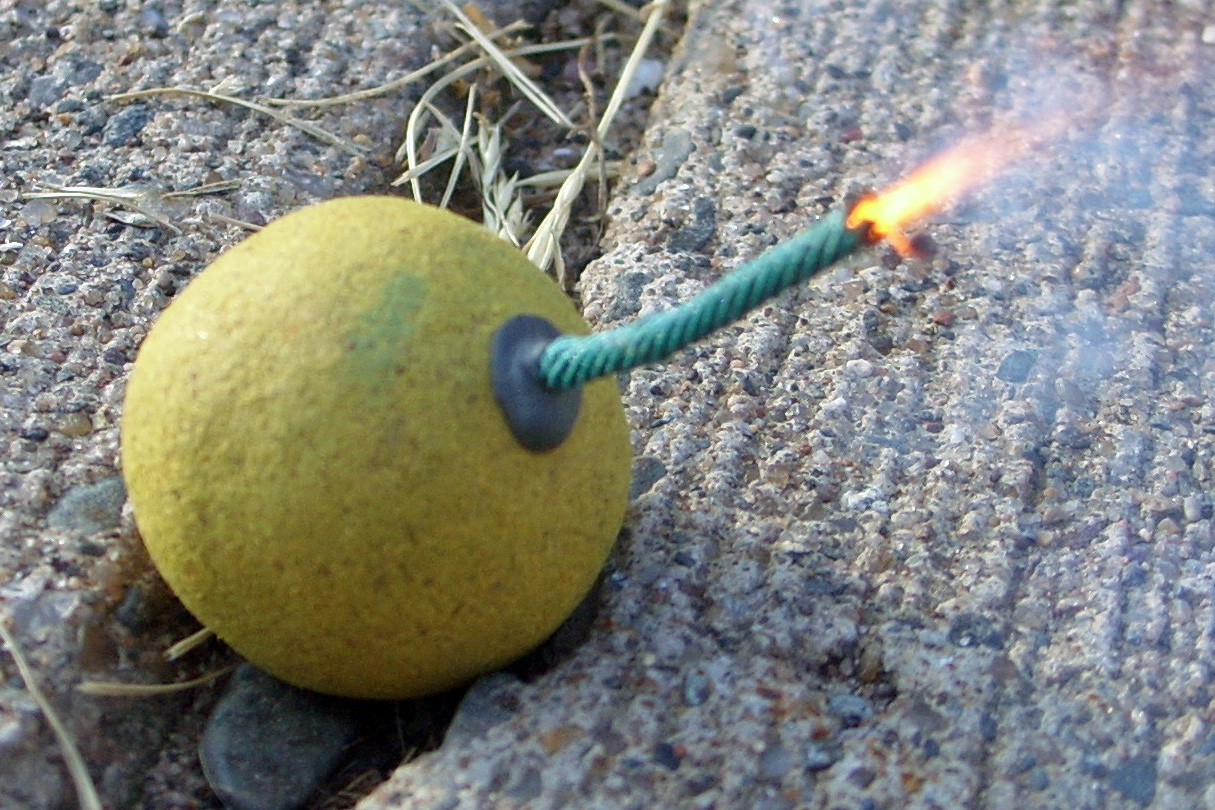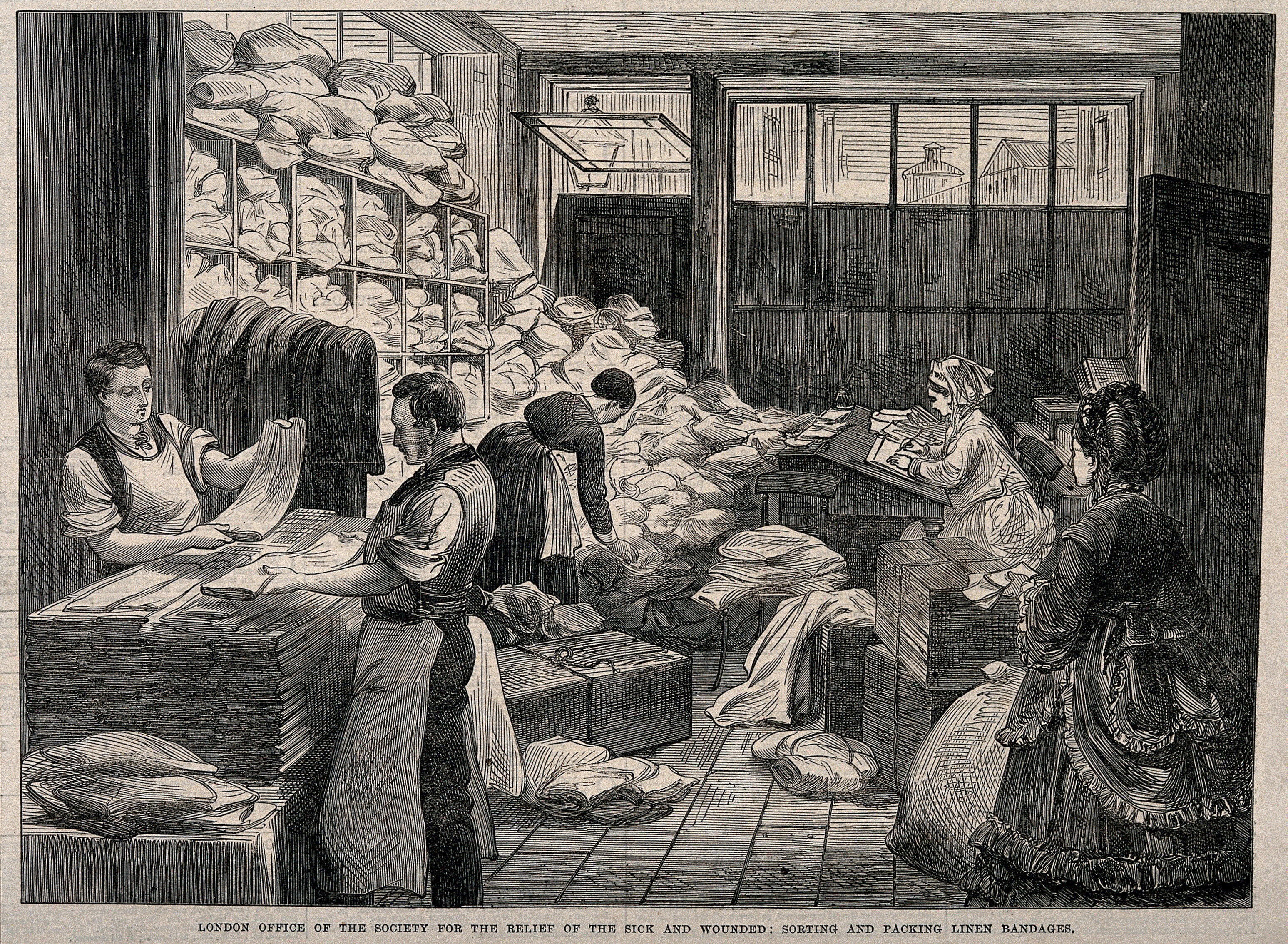|
The Firs, Whitchurch
The Firs is a country house in Whitchurch, Buckinghamshire. History The house was built in 1897 for Charles Gray, an officer who fought with the Imperial Yeomanry in South Africa. By the 1930s the house was owned by Major Arthur Abrahams from whom it was requisitioned by the War Office in 1939. During the Second World War the house was used by MD1 for the development and testing of various weapons including time delay fuses, depth charges and PIAT guns. The house, which was known locally as "Winston Churchill's Toyshop", accommodated some 250 people at this time. Meanwhile Abrahams was knighted for his services to the British Red Cross in June 1942. In around 1953 the house became the Central Research Laboratories for Richard Thomas and Baldwins Richard Thomas and Baldwins Ltd (RTB) was a major iron, steel and tinplate producer, primarily based in Wales and formed in 1948 by the merger of Richard Thomas & Co Ltd with Baldwins Ltd. It was absorbed into British Steel Corporation ... [...More Info...] [...Related Items...] OR: [Wikipedia] [Google] [Baidu] |
A413 At The White Swan, Whitchurch - Geograph
The A413 is a major road in England that runs between Gerrards Cross (west of London) to Towcester (northwest of Milton Keynes). It passes through or near various towns and villages including (in northbound order) Amersham, Great Missenden, Wendover, Aylesbury, Winslow, and Buckingham. Most of the road is in Buckinghamshire, with a part at the north end in Northamptonshire. In the 1960s, a by-pass was built around Great Missenden and re-routing has taken place through Aylesbury town centre. In recent years , by-passes have been built for Amersham (1987) and Wendover (1998). In the early 21st century, the junction near Towcester where the A413 joins the A43 has also been redeveloped along with much-needed A43 redevelopment around Silverstone Circuit. That part of the route which runs along the Misbourne Valley dates back into pre-history. In Medieval times, the Cartulary of Missenden Abbey simply recorded the road as "the Kings Highway". Also just north of Aylesbury the ... [...More Info...] [...Related Items...] OR: [Wikipedia] [Google] [Baidu] |
Whitchurch, Buckinghamshire
Whitchurch is a village and civil parish in the unitary authority area of Buckinghamshire, England. The village is on the A413 road about north of Aylesbury and south of Winslow. The 2011 Census recorded a parish population of 932. Toponym The toponym "Whitchurch" is common in England. It derived from the Old English ''wit chert'', meaning ''white earth''. Castle Bolbec Castle was built in the Anarchy in the early 12th century. It was burned down by Parliamentary forces in the English Civil War. Its remains are a scheduled monument. Parish church The oldest parts of the Church of England parish church of Saint John the Evangelist are 13th-century. They include the chancel and the Early English west doorway. The nave has aisles with four-bay arcades. The south aisle was added first, late in the 13th century. The north aisle was added slightly later, and the south door is early 14th-century. Also 14th-century are the sedilia and piscina in the chancel. The west tower was ... [...More Info...] [...Related Items...] OR: [Wikipedia] [Google] [Baidu] |
Imperial Yeomanry
The Imperial Yeomanry was a volunteer mounted force of the British Army that mainly saw action during the Second Boer War. Created on 2 January 1900, the force was initially recruited from the middle classes and traditional yeomanry sources, but subsequent contingents were more significantly working class in their composition. The existing yeomanry regiments contributed only a small proportion of the total Imperial Yeomanry establishment. In Ireland 120 men were recruited in February 1900. It was officially disbanded in 1908, with individual Yeomanry regiments incorporated into the new Territorial Force. Background The Dutch Cape Colony was established in modern-day South Africa in the second half of the 17th century. The colony subsequently passed to the Dutch East India Company which, in 1815, sold it to the British, thus strengthening the rival British-ruled Cape Colony. Unhappy with the subsequent British governance, the Dutch settlers, known now as the Boers, established the ... [...More Info...] [...Related Items...] OR: [Wikipedia] [Google] [Baidu] |
South Africa
South Africa, officially the Republic of South Africa (RSA), is the southernmost country in Africa. It is bounded to the south by of coastline that stretch along the South Atlantic and Indian Oceans; to the north by the neighbouring countries of Namibia, Botswana, and Zimbabwe; and to the east and northeast by Mozambique and Eswatini. It also completely enclaves the country Lesotho. It is the southernmost country on the mainland of the Old World, and the second-most populous country located entirely south of the equator, after Tanzania. South Africa is a biodiversity hotspot, with unique biomes, plant and animal life. With over 60 million people, the country is the world's 24th-most populous nation and covers an area of . South Africa has three capital cities, with the executive, judicial and legislative branches of government based in Pretoria, Bloemfontein, and Cape Town respectively. The largest city is Johannesburg. About 80% of the population are Black Sou ... [...More Info...] [...Related Items...] OR: [Wikipedia] [Google] [Baidu] |
War Office
The War Office was a department of the British Government responsible for the administration of the British Army between 1857 and 1964, when its functions were transferred to the new Ministry of Defence (United Kingdom), Ministry of Defence (MoD). This article contains text from this source, which is available under th Open Government Licence v3.0 © Crown copyright It was equivalent to the Admiralty (United Kingdom), Admiralty, responsible for the Royal Navy (RN), and (much later) the Air Ministry, which oversaw the Royal Air Force (RAF). The name 'War Office' is also given to the former home of the department, located at the junction of Horse Guards Avenue and Whitehall in central London. The landmark building was sold on 1 March 2016 by HM Government for more than British pound, £350 million, on a 250 year lease for conversion into a luxury hotel and residential apartments. Prior to 1855, 'War Office' signified the office of the Secretary at War. In the 17th an ... [...More Info...] [...Related Items...] OR: [Wikipedia] [Google] [Baidu] |
World War II
World War II or the Second World War, often abbreviated as WWII or WW2, was a world war that lasted from 1939 to 1945. It involved the World War II by country, vast majority of the world's countries—including all of the great powers—forming two opposing military alliances: the Allies of World War II, Allies and the Axis powers. World War II was a total war that directly involved more than 100 million Military personnel, personnel from more than 30 countries. The major participants in the war threw their entire economic, industrial, and scientific capabilities behind the war effort, blurring the distinction between civilian and military resources. Air warfare of World War II, Aircraft played a major role in the conflict, enabling the strategic bombing of population centres and deploying the Atomic bombings of Hiroshima and Nagasaki, only two nuclear weapons ever used in war. World War II was by far the List of wars by death toll, deadliest conflict in hu ... [...More Info...] [...Related Items...] OR: [Wikipedia] [Google] [Baidu] |
MD1 (military R&D Organisation)
Ministry of Defence 1 (MD1), also known as "Churchill's Toyshop", was a British weapon research and development organisation of the Second World War. Its two key figures were Major Millis Jefferis and Stuart Macrae, former editor of ''Armchair Science'' magazine. History MD1 began in "Military Intelligence Research" (MIR). MIR was a department of the War Office set up in 1939 under Lt-Col Joe Holland RE. Holland was the General Staff Officer Grade 1 (GSO1) and brought in Jefferis, also a Royal Engineers sapper and explosives expert, with experience in India, as GSO2 to head MIR(c) a division of MIR that was to develop weapons for irregular warfare. Needing special magnets, Jefferis brought in Macrae initially as an outside contractor but later to be brought into uniform and serve as his deputy. Between them they produced the limpet mine, a timed explosive that could be stuck to the underside of a ship. started in a room at the War Office, Macrae initially secured offices and ... [...More Info...] [...Related Items...] OR: [Wikipedia] [Google] [Baidu] |
Fuse (explosives)
In an explosive, pyrotechnic device, or military munition, a fuse (or fuze) is the part of the device that initiates function. In common usage, the word fuse is used indiscriminately. However, when being specific (and in particular in a military context), the term ''fuse'' describes a simple pyrotechnic initiating device, like the cord on a firecracker whereas the term '' fuze'' is used when referring to a more sophisticated ignition device incorporating mechanical and/or electronic components, such as a proximity fuze for an M107 artillery shell, magnetic or acoustic fuze on a sea mine, spring-loaded grenade fuze, pencil detonator, or anti-handling device. History Documented evidence suggests that the earliest fuses were first used by the Song Chinese between the 10th and 12th centuries. After the Chinese invented gunpowder, they began adapting its explosive properties for use in military technology. By 1044 they were using gunpowder in simple grenades, bombs, and ... [...More Info...] [...Related Items...] OR: [Wikipedia] [Google] [Baidu] |
Depth Charge
A depth charge is an anti-submarine warfare (ASW) weapon. It is intended to destroy a submarine by being dropped into the water nearby and detonating, subjecting the target to a powerful and destructive hydraulic shock. Most depth charges use high explosive charges and a fuze set to detonate the charge, typically at a specific depth. Depth charges can be dropped by ships, patrol aircraft, and helicopters. Depth charges were developed during World War I, and were one of the first viable methods of attacking a submarine underwater. They were widely used in World War I and World War II, and remained part of the anti-submarine arsenals of many navies during the Cold War, during which they were supplemented, and later largely replaced, by anti-submarine homing torpedoes. A depth charge fitted with a nuclear warhead is also known as a " nuclear depth bomb". These were designed to be dropped from a patrol plane or deployed by an anti-submarine missile from a surface ship, or a ... [...More Info...] [...Related Items...] OR: [Wikipedia] [Google] [Baidu] |
PIAT
The Projector, Infantry, Anti Tank (PIAT) Mk I was a British man-portable anti-tank weapon developed during the Second World War. The PIAT was designed in 1942 in response to the British Army's need for a more effective infantry anti-tank weapon and entered service in 1943. The PIAT was based on the spigot mortar system, and projected (launched) a 2.5 pound (1.1 kg) shaped charge bomb using a cartridge in the tail of the projectile. It possessed an effective range of approximately in a direct fire anti-tank role, and in an indirect fire role. The PIAT had several advantages over other infantry anti-tank weapons of the period: it had greatly increased penetration power over the previous anti-tank rifles, it had no back-blast which might reveal the position of the user or accidentally injure friendly soldiers around the user, and it was simple in construction. However, the device also had some disadvantages: powerful recoil, a difficulty in cocking the weapon, and early pro ... [...More Info...] [...Related Items...] OR: [Wikipedia] [Google] [Baidu] |
British Red Cross
The British Red Cross Society is the United Kingdom body of the worldwide neutral and impartial humanitarian network the International Red Cross and Red Crescent Movement. The society was formed in 1870, and is a registered charity with more than 17,200 volunteers and 3,400 staff. At the heart of their work is providing help to people in crisis, both in the UK and overseas. The Red Cross is committed to helping people without discrimination, regardless of their ethnic origin, nationality, political beliefs or religion. Queen Elizabeth II was the patron of the society until her death on 8 September 2022. In the year ending December 2019, the charity's income was £244.9million, which included £68.7M from government contracts and grants. It spent £197.5M (80%) of its income delivering its charitable activities. Guiding ethos The mission of the British Red Cross is to mobilise the power of humanity so that individuals and communities can prepare for, deal with and recover f ... [...More Info...] [...Related Items...] OR: [Wikipedia] [Google] [Baidu] |
Richard Thomas And Baldwins
Richard Thomas and Baldwins Ltd (RTB) was a major iron, steel and tinplate producer, primarily based in Wales and formed in 1948 by the merger of Richard Thomas & Co Ltd with Baldwins Ltd. It was absorbed into British Steel Corporation in 1967. The business now forms part of Corus, a subsidiary of Tata Steel. Richard Thomas & Co Richard Thomas & Co Ltd was an iron, steel and tinplate producer and colliery proprietor. The founder, Richard Thomas (died 1916), leased two tinplate works in Gloucestershire: Lydbrook in 1871 and Lydney in 1876. He went on to acquire local collieries and, in 1888, the Melingriffith Tin Plate Works near Cardiff. Richard Thomas & Co, in which Thomas was succeeded as managing director by his son, Richard Beaumont Thomas, in 1888, became one of the principal tinplate manufacturers in the UK. The Ebbw Vale Steel Iron and Coal Company was taken over by Richard Thomas & Co in 1936, and a new steel plant and strip mill was erected in the town. Baldwins ... [...More Info...] [...Related Items...] OR: [Wikipedia] [Google] [Baidu] |







